Diseases of hosts and their treatment
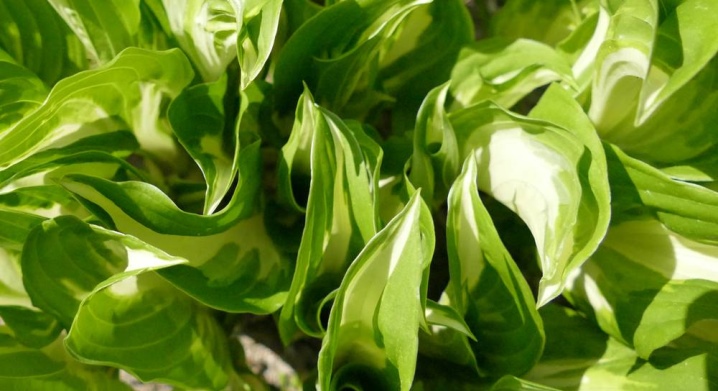
Hosta quite often becomes the choice of gardeners due to its spectacular appearance and undemanding care. Nevertheless, in order to make the possession of this plant even more enjoyable, it is necessary to first find out what diseases the culture suffers from, as well as how to prevent them.
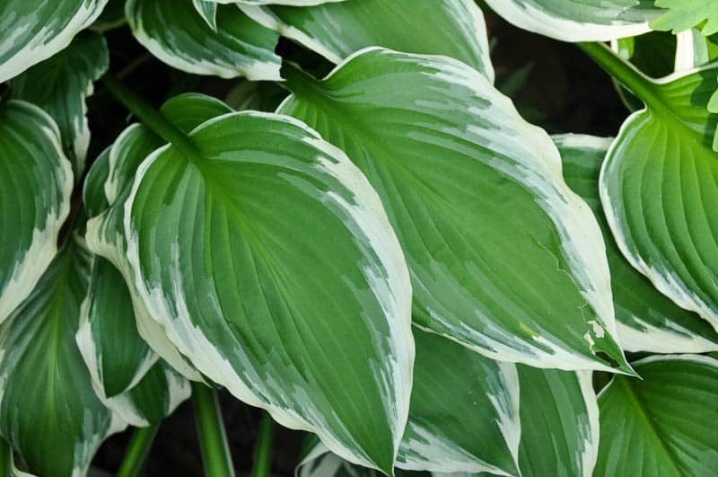
Signs and causes of lesions
Hosta diseases are much less common than insect damage to plants. Usually, it is diseases that are the result of improper crop care, and well-thought-out agricultural technology ensures both the growth and development of the flower. In any case, in order to keep your garden in order, you need to quickly respond to any signs that appear. The presence of viral diseases is signaled by quite a lot of host state transformations. For example, such a situation arises if yellow spots appear on the surface of the sheet plates or a large accumulation of dots.
The neoplasms are round in shape, and the affected area increases over time. In the future, the leaves curl around the edges and finally lose their attractive appearance. Other characteristic features of the virus include dwarfism or simply slow development, as well as interveinal chlorosis. If you look at such a host, you can immediately understand that she is sick.
By the way, it was previously believed that if the leaves turn yellow with spots, then we are not talking about a disease, but simply the original color of the hosta. Nevertheless, when it became clear that the leaves not only curled up, but the plant did not grow, experts started talking about the disease.
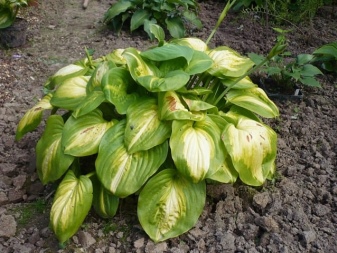
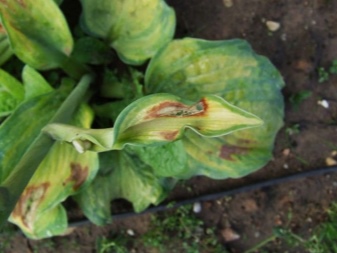
If the leaf plates are covered with large brown spots, then we are talking about phyllostictosis. Individual specks gradually merge with each other, forming a single area of infection. All of it is filled with a fungus that looks like a whitish or yellow bloom. In most cases, not only the plates, but also the flower stalks of the culture become such white or yellow. Finally, all damaged parts dry, tissue necrosis begins, and dry brown spots crack and break.
It should be added that phyllostictosis occurs with excessive watering, high humidity, combined with temperatures exceeding 25 degrees.
When the hosta suffers from gray rot, it can be detected in time by the condition of the edges of the plates - they begin to rot. Besides, an ash-colored bloom forms on the surface, and the tops can dry out... Sometimes part of the leaf even dies off immediately. If you skip the first symptoms, then the entire surface of the leaf will be covered with rot, and the disease will spread to neighboring cultures with fungal spores. The last incurable stages of the disease are characterized by complete drying of leaf blades and stems.
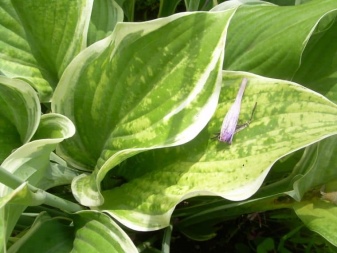
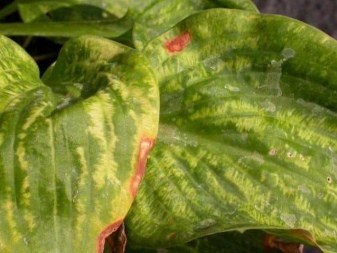
Root collar rot is also characteristic of this culture. In this case, the development of the shrub first slows down or even completely stops, after which the leaf plates gradually lose their pigment. They turn yellow, "following" from the edges to the center, then dry and completely discolor. Eventually, the damaged leaves leave the plant. Rot of the root collar occurs due to various fungi, "activated" in the shade, on thickened plantings, subject to excessive moisture.
Promotes its development and deepening of rhizomes. If in the summer in June or July, in the very heat, the ends of the leaf plates begin to dry out, then perhaps we are talking about rust. The reason for its occurrence is the lack of irrigation, especially on hot days.
Most often, varieties with a yellow border are affected.

Bacterial "soft" rot manifests itself in the form of decomposition of cuttings and lower leaves. Besides, a characteristic unpleasant odor arises, and the leaf blades are covered with brown spots. This disease occurs in those places where the leaf is damaged, and therefore bacteria can affect the weakened plant. Sometimes "soft" rot manifests itself even after the culture is covered with ice in the cold.
We must not forget about petiola, which is often called crown rot and also refers to a fungal disease. It can be determined by the state of the leaf plates - they first turn yellow, and then fade in the direction from the edges to the center. In addition, their structure becomes looser and even softened at the base. At the same time, large plates break away from the bush due to their weight and unreliable fastening of the base. Sometimes white filaments of the fungus, called mycelium, appear on the host.
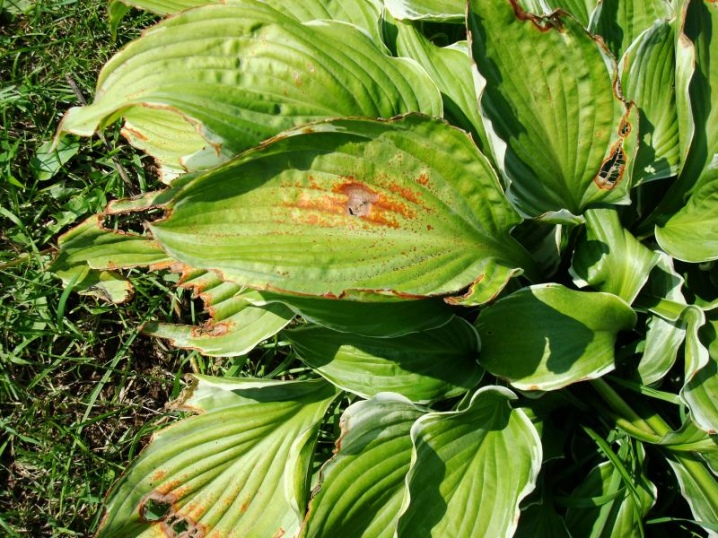
Common diseases
The description of the hosta indicates that the culture is characterized by those fungal diseases that develop due to high humidity. For example, we are talking about rust, various rot and stains. Besides, quite often there is a specific virus that functions only on the host... Its name sounds like Hosta Virus X (HVX), and it was discovered relatively recently - at the end of the last century. American scientist Lockhart should be thanked for the discovery.
The disease is transmitted through the juice that falls on a shovel, knife or other garden tools, or the hands of a gardener who trims leaf plates or propagates shrubs. When a soiled object or hand comes in contact with healthy plants, the virus spreads to them, "entering" the existing sections or wounds. Further, the viral cells begin to multiply rapidly due to the possibility of nutrition.
The host of Siebold and her hybrids have an innate immunity to this viral disease, but sometimes the trouble still happens.
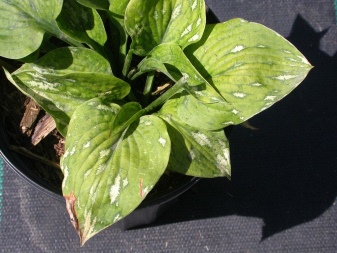
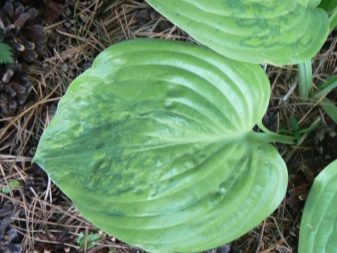
Control methods
If hosta shrubs suffer from a viral disease, then their treatment is that the plant is completely removed from the ground and burned right along with the adjacent soil mixture. Unfortunately, there is no way to save the plant, and there is no point in treating it. Those garden tools that were used for digging are reliably treated with a disinfectant, for example, soaked in a solution of manganese or formalin. Unlike viruses, phyllostictosis can be cured. You need to do the following: first, reduce the amount of irrigation of the bush and completely eliminate the damaged parts - cut and burn them.
In the next step, the remaining plant is treated with a suitable medicinal composition, for example, "Strobi" or "Vectra", which is applied by spraying. Experienced gardeners often use colloidal sulfur, half a glass of which must be diluted in 10 liters of settled liquid. The buds must be additionally treated with copper sulfate diluted in water, or with a solution of colloidal sulfur. This treatment is repeated after another 10 days, and then as many times as will require a complete cure.
It should be mentioned that the disease easily and quickly "jumps" to neighboring plants, so it is recommended to transplant a diseased shrub to another site.
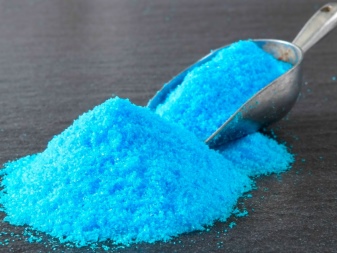
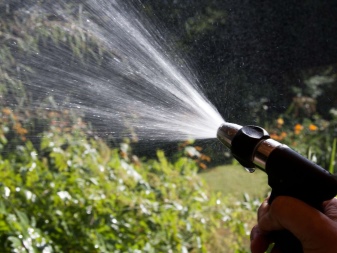
To treat the initial stage of gray rot, it is enough to simply spray the diseased leaves with a suitable drug - Bordeaux liquid, Topaz or Champion.If it was not possible to quickly correct the situation with putrefactive diseases, then there is only one way to deal with them - to completely dig out the bush, burn it along with the ground and do not forget about processing tools.
Treatment of root collar rot is as follows: if the disease has appeared recently, then the bush will have to be completely dug up and freed from that part of the root system that has become rotten with a processed knife. The cut points are immediately coated with a fungicide or other disinfectant. The treated host must be transplanted to a new place, so as not to provoke a second disease.
If the initial moment of the disease is missed, then the bush will have to be dug up and burned, and the place where it grew must be treated with a disinfectant.
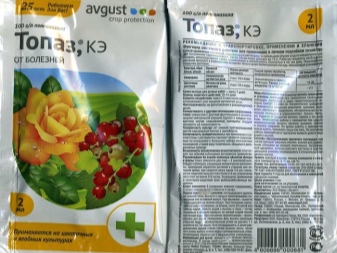

To treat rust, it is enough to simply change the care of the host. For this the shrub is transplanted to a shady area, and the irrigation process is made more balanced and is necessarily carried out with the help of naturally warmed water... In addition, it is important for the shrub to provide regular spraying. Getting rid of "soft" rot is carried out only by destroying the shrub. After work, it is necessary to thoroughly wash hands and gloves, as well as disinfect the tools used. It is unlikely that it will be possible to cure the host from petiol. The plant must be removed from the soil and destroyed, not forgetting about the elimination of the contaminated soil.
It is important to add that some varieties of hosts are rare, expensive, and therefore valuable, so it may be a pity to just throw them away... You can try to transplant the infected shrub into a separate container, isolating it from the rest of the inhabitants of the garden, and then try to treat the host and look at its further "behavior".
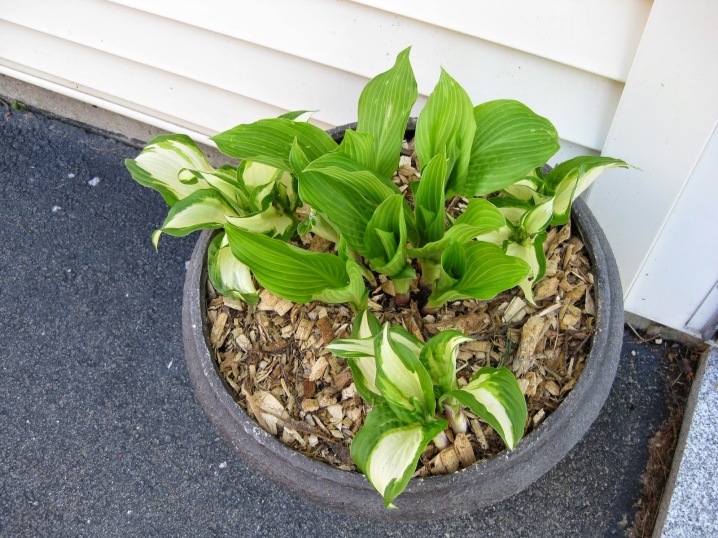
Prophylaxis
Gray rot is a disease that is quite difficult to cure, but high-quality prevention will solve all problems. At the beginning of spring, when the soil is loosening, it is necessary to carry out the primary treatment by spraying the surface with copper-containing preparations, for example, "Hom" or "Abiga-peak". It will be more convenient to do this with a conventional spray bottle. Further, when the first leaves appear on the host, the bush must be sprayed with such complex products as "Acrobat" or "Fundazol"... After 14 days, the treatment is repeated.
To prevent the Hosta Virus X (HVX) virus, it is necessary to use necessarily disinfected tools, and also make sure that the virus does not get on the bushes in any other way. You should buy planting material only in safe places, and also make sure that the colors and "pattern" of real plates correspond to what is indicated in the offered catalog. The presence of a mosaic, spots or streaks signal an existing problem, which means that such a shrub should not be taken.
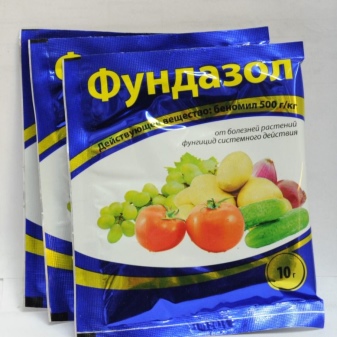
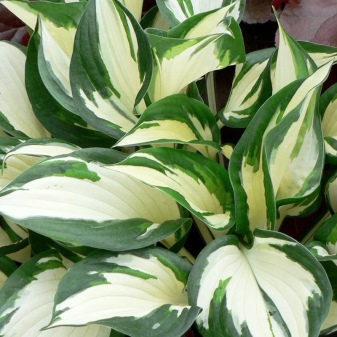
General preventive measures include compliance with the basic rules of agricultural technology. In order for the host to develop successfully, it must be protected from direct sunlight, it is enough to irrigate, divide already mature bushes and ensure fertilization. Despite the need for timely moistening, it is equally important to ensure that the soil is not overly moistened. Shrubs are regularly examined.
In addition, the culture requires feeding, both organic and mineral, loosening and weeding, as well as winter insulation with high-quality mulch.
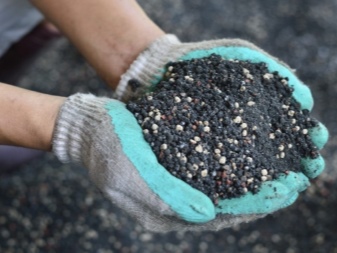

See below for more details.







































































































The comment was sent successfully.